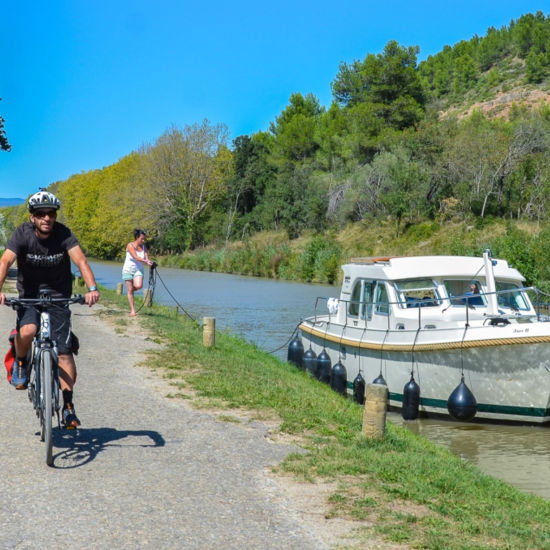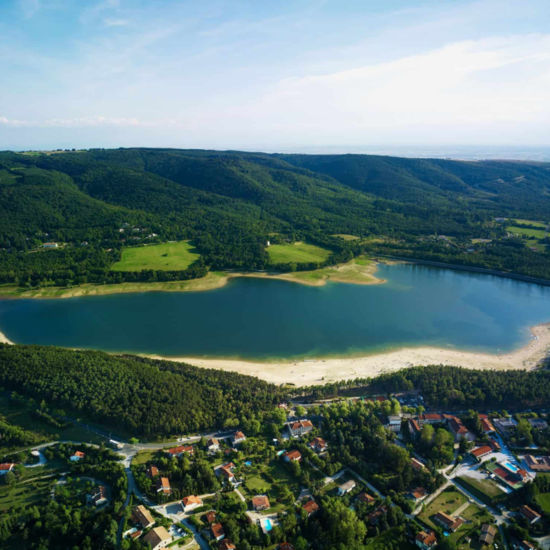
Grand Bassin and port in Castelnaudary
Grand bassin and port
in Castelnaudary
PK 64.6
The Grand Bassin of Castelnaudary, created at the same time as the canal, was a key mooring point on the Canal du Midi from 1674. Today, it is a popular place with walkers and recreational boaters.
Castelnaudary basin
The Canal du Midi at the entrance to the town

According to the original plans from 1666, the Canal du Midi did not pass via Castelnaudary. However, in 1671, the consuls of Castelnaudary managed to persuade King Louis XIV to authorise a modification of the canal route. The canal would therefore pass by the entrance to the town, under the city walls.
There was an area of marshland on the south side of the town where the water flowing down the hills would stagnate. Riquet chose to submerge this place, known as 'le pré de l’estang', creating a beautiful body of water that reflected the town.
When Intendant Daguesseau came to inspect the work carried out in 1684, the banks of Castelnaudary basin were still in their natural form (not yet covered in cut stone) and he described the area as "an almost circular mass measuring 200 toises (1 toise = 1.98 metres) in diameter and 600 toises in circumference, which is quite ordinary in appearance. This basin was formed naturally and then completed with a small dyke at the entrance to the valley".
Ile de la Cybèle at the heart of the basin
As a solution to the issues raised by the strong winds in this region known as the 'Lauragais groove', a 'windbreaker' island was created in around 1750 at the Grand Bassin, named Ile de la Cybèle (possibly in tribute to the ancient earth-goddess).
The port of Castelnaudary in a booming industry
A mooring point from 1674
Open to navigation from 1674 between Toulouse and Castelnaudary, the Grand Bassin was the eastern terminus of the canal for six years.
In 1681, six months after the death of Pierre-Paul Riquet, the entire canal was opened to navigation. It was at the Grand Bassin that the Canal du Midi was inaugurated on 19 May 1681, officially opening the waterway to navigation. Castelnaudary is a key stopover because this was the 'couchée' evening stopover after a day's navigation from Toulouse for the 'barque de poste' which transported passengers back then.
Economic activity generated by inland waterway transport
The available space around this body of water was ideal for various professions related to inland waterway transport (carpenters, rope makers, etc.). This really boosted the economy of the town. Two storehouses for drying wood were built in 1747 and 1752 on the south shores, and there were also rope makers, carpenters and troughs. These buildings were close to two Cales de Radoub (dry docks for boat repairs) which are proof of the booming shipbuilding industry here from the 17th to the 20th century.
The transport of cereals from Lauragais
The port of Castelnaudary was a key facility for farmers from the Lauragais who shipped their crops from this location. The many flour mills here bear witness to this farming past. One of them can be seen near Saint-Roch staircase lock.
The port of Castelnaudary today
The port of Castelnaudary is home to one of the biggest boat rental companies. It was one of the first to be created in the 1970s. The port has become a favourite spot for recreational boaters exploring the Canal du Midi. It is very close to the town centre and is a great place to moor your boat overnight or longer. There is a wide range of facilities and services here.






